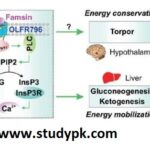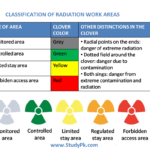Interpreting Genexpert Results: Understanding the Role of MTB and RIF in TB Diagnosis Here is a sample Genexpert MTB/RIF report format: Patient Information:Name: [Patient's name]Age: [Patient's age]Gender: [Patient's gender]Medical Record Number: [Patient's medical record number]Specimen Type: [Type of specimen collected] Test Results: MTB (Mycobacterium … [Read more...] about Sample Genexpert MTB/RIF Report Format for TB Diagnosis
Don’t Replace Your Canon G2020 Maintenance Cartridge Just Yet: Try This Resetting Method
Quick and Easy Solution: Resetting Canon G2020 Maintenance Cartridge Without Changing It The Canon G2020 printer has a maintenance cartridge that needs to be replaced periodically to ensure optimal performance of the printer. However, if you want to reset the maintenance cartridge without replacing it, you can follow these steps: How to Reset Canon G2020 Maintenance … [Read more...] about Don’t Replace Your Canon G2020 Maintenance Cartridge Just Yet: Try This Resetting Method
Risks Associated with Different Types of Labor Induction
Types and Risks of Labor Induction Types of Labor Induction Risks Oxytocin (Pitocin) - Non-reassuring fetal heart rate patterns- Uterine rupture (rare)- Infection- Postpartum hemorrhage- Need for cesarean delivery Mechanical methods (balloon catheters, cervical ripening agents) - Uterine … [Read more...] about Risks Associated with Different Types of Labor Induction
New Gut-Secreted Hormone ‘Famsin’ Contributes to Metabolic Adaptations During Fasting: Study
Chinese Researchers Discover New Gut-Secreted Hormone "Famsin" Contributing to Metabolic Adaptations during Fasting A recent study published in Cell Research by researchers from Tsinghua University and Zhejiang Chinese Medical University has identified a new gut-secreted hormone named "famsin" that contributes to metabolic adaptations during fasting. Role of the … [Read more...] about New Gut-Secreted Hormone ‘Famsin’ Contributes to Metabolic Adaptations During Fasting: Study
Delimitation of Areas in Radioactive Facilities: Ensuring Protection of Workers and the Public
Delimitation of Areas in Radioactive Facilities: Ensuring Protection of Workers and the Public Protection of workers in radioactive facilities and the public is essential to ensure their safety. One important aspect of this is the delimitation of areas in radioactive facilities. The different areas in a radioactive facility are classified according to the levels of … [Read more...] about Delimitation of Areas in Radioactive Facilities: Ensuring Protection of Workers and the Public




